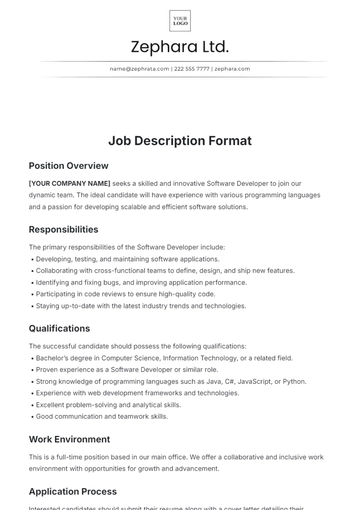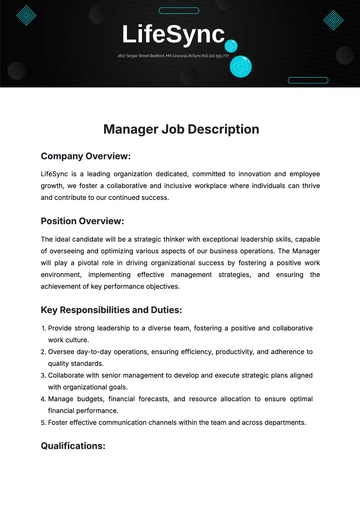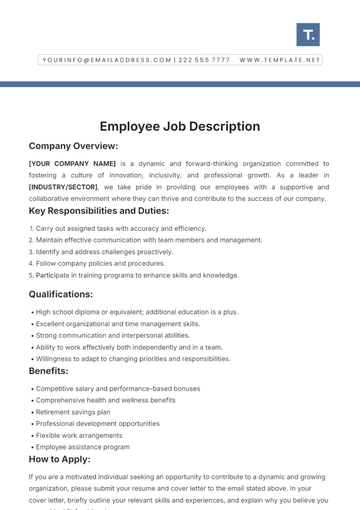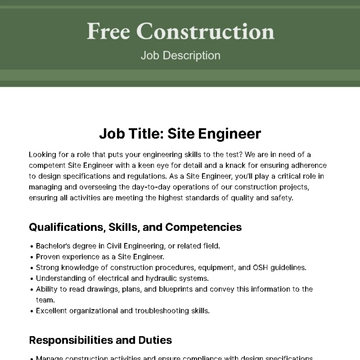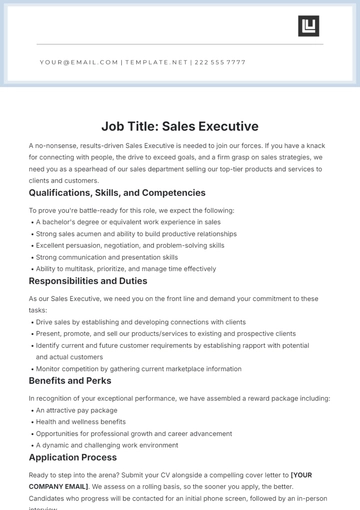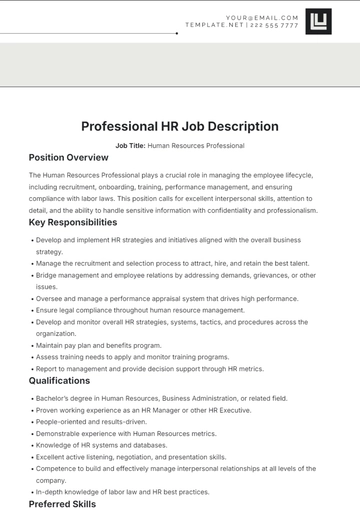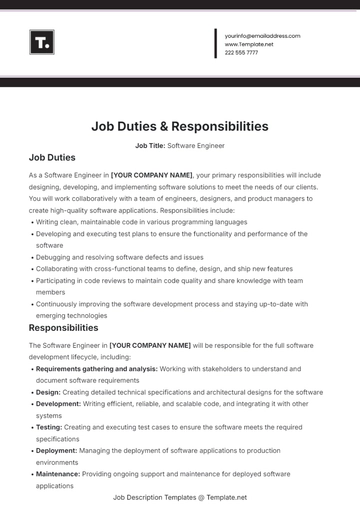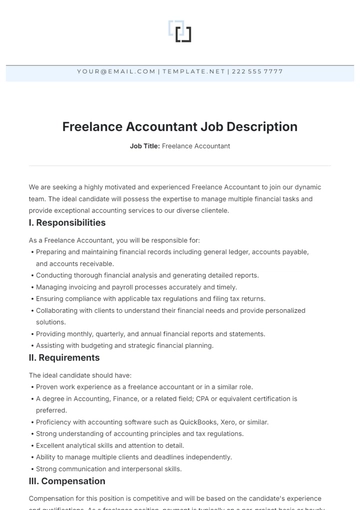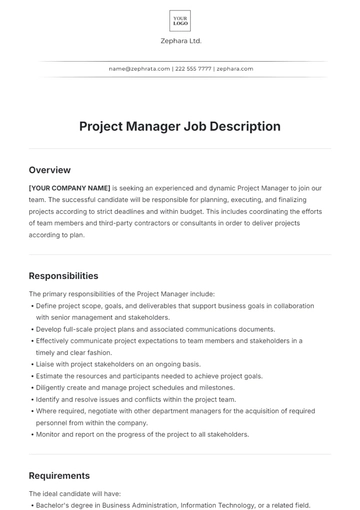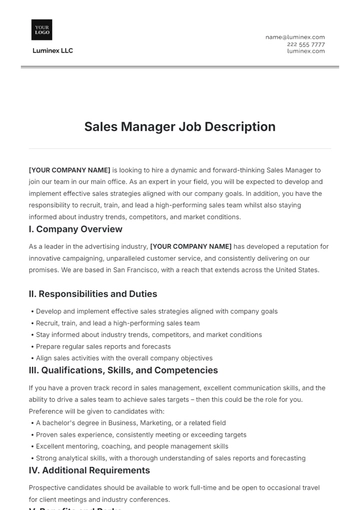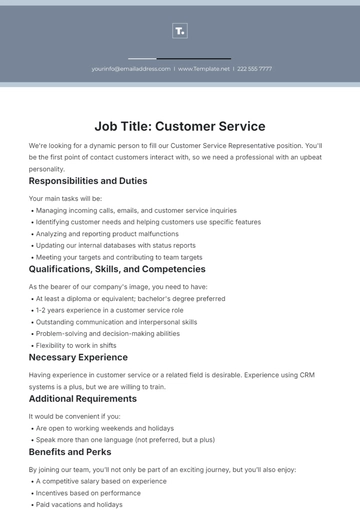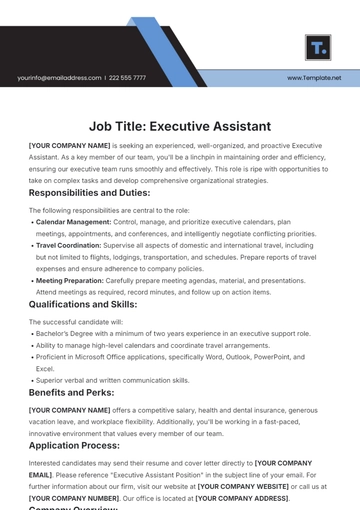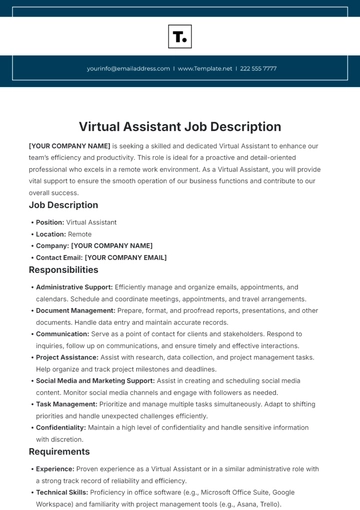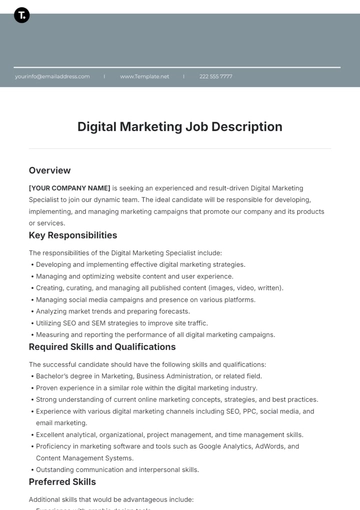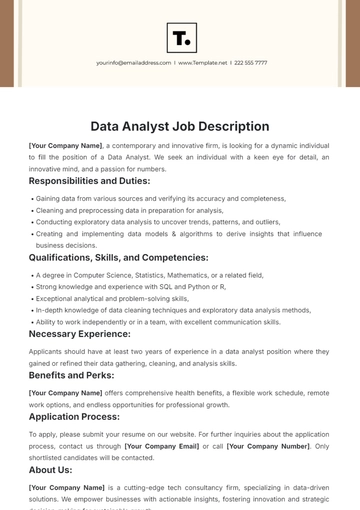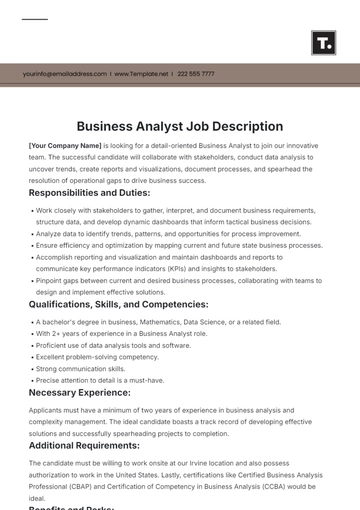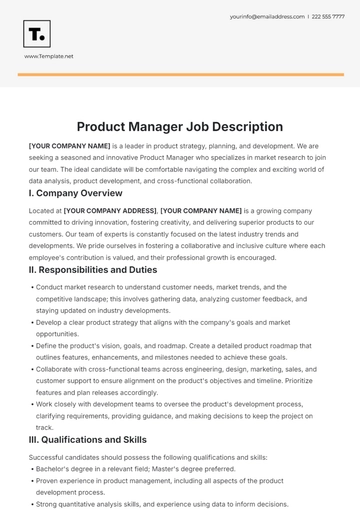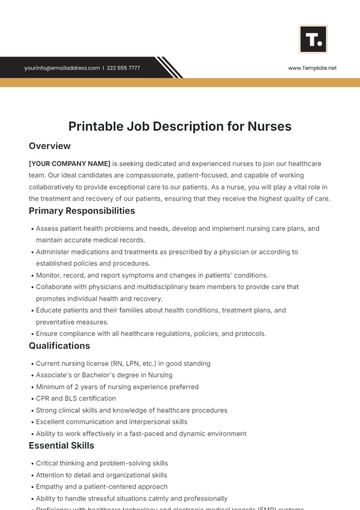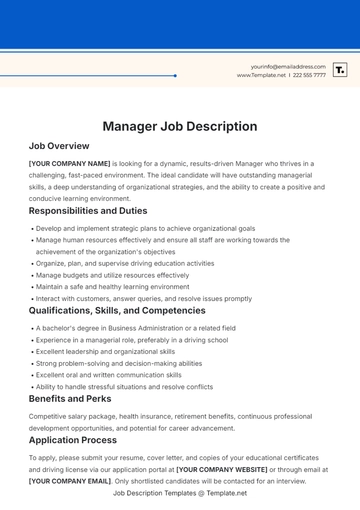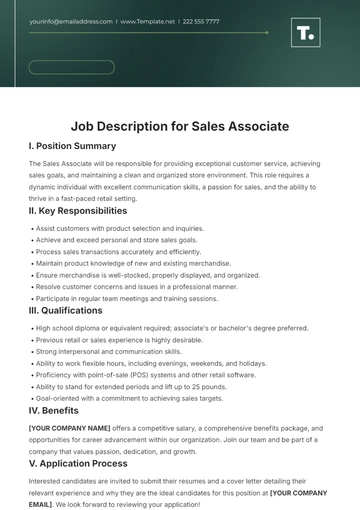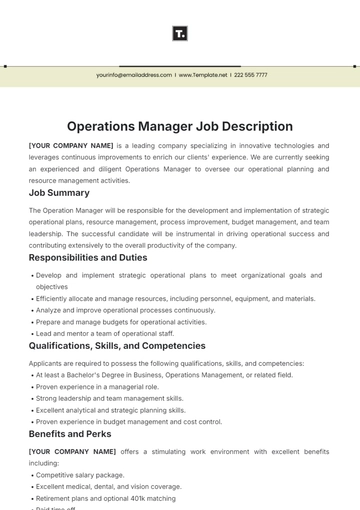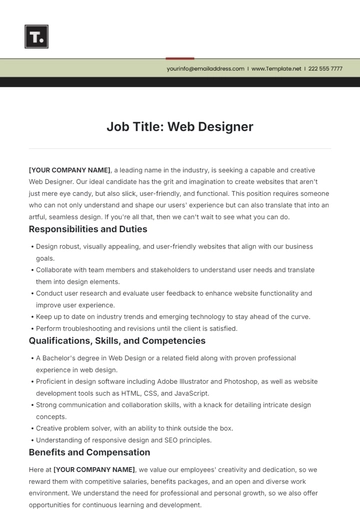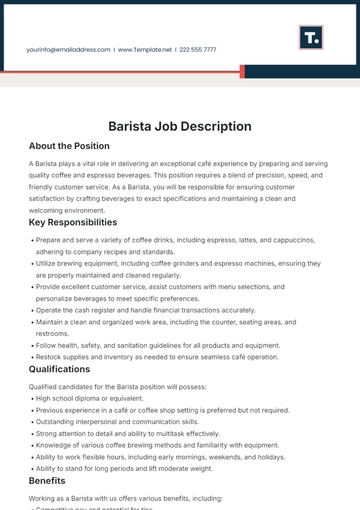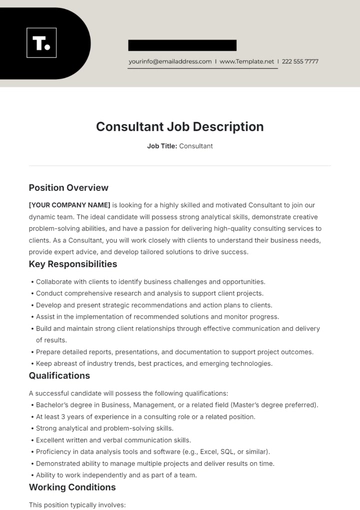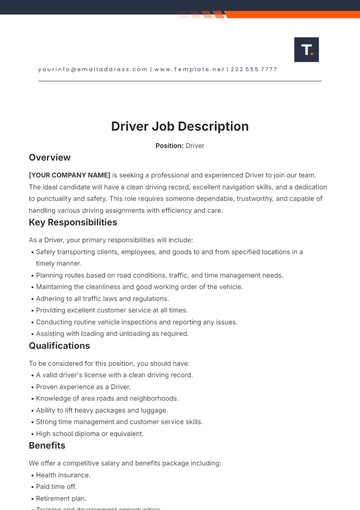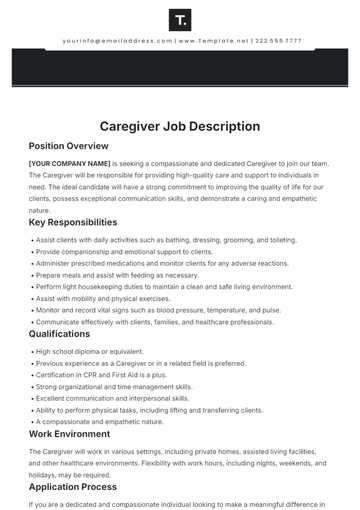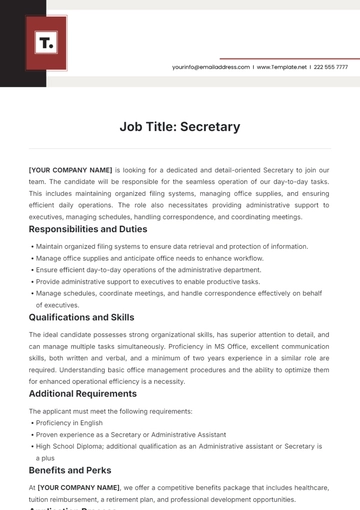Free Blank Job Description
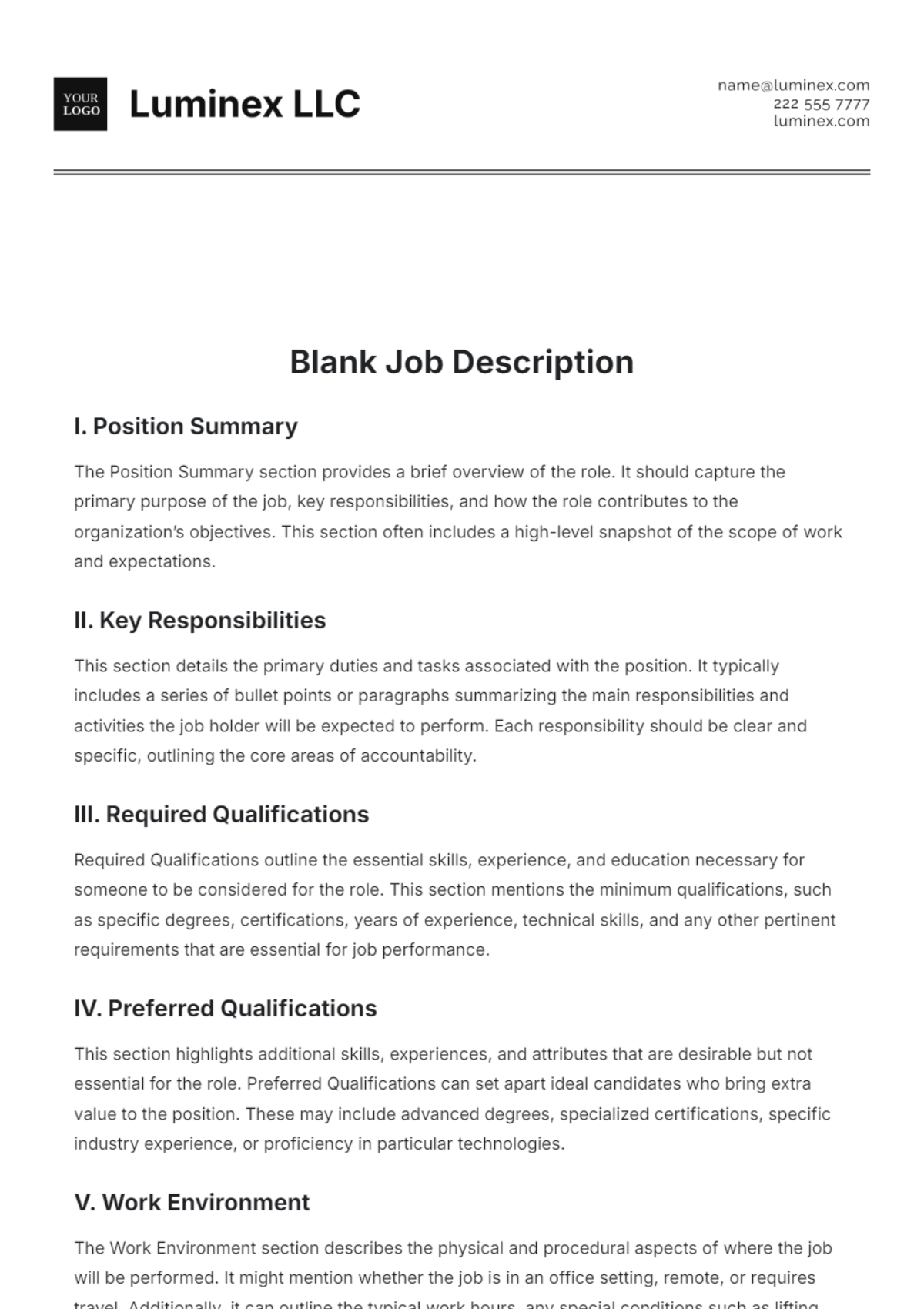
I. Position Summary
The Position Summary section provides a brief overview of the role. It should capture the primary purpose of the job, key responsibilities, and how the role contributes to the organization’s objectives. This section often includes a high-level snapshot of the scope of work and expectations.
II. Key Responsibilities
This section details the primary duties and tasks associated with the position. It typically includes a series of bullet points or paragraphs summarizing the main responsibilities and activities the job holder will be expected to perform. Each responsibility should be clear and specific, outlining the core areas of accountability.
III. Required Qualifications
Required Qualifications outline the essential skills, experience, and education necessary for someone to be considered for the role. This section mentions the minimum qualifications, such as specific degrees, certifications, years of experience, technical skills, and any other pertinent requirements that are essential for job performance.
IV. Preferred Qualifications
This section highlights additional skills, experiences, and attributes that are desirable but not essential for the role. Preferred Qualifications can set apart ideal candidates who bring extra value to the position. These may include advanced degrees, specialized certifications, specific industry experience, or proficiency in particular technologies.
V. Work Environment
The Work Environment section describes the physical and procedural aspects of where the job will be performed. It might mention whether the job is in an office setting, remote, or requires travel. Additionally, it can outline the typical work hours, any special conditions such as lifting requirements, or specific equipment used.
VI. Compensation and Benefits
This section provides an overview of the compensation package and benefits associated with the position. It can briefly touch on salary ranges, bonuses, health benefits, retirement plans, and other perks that the company offers. This information helps prospective candidates understand the overall value proposition of the role.
VII. Application Process
The Application Process section explains how candidates should apply for the position. It can include instructions for submitting a resume and cover letter, any relevant application deadlines, and details on what to expect after submitting an application, such as interview stages or selection criteria.
For more information, visit us on our website at [YOUR COMPANY WEBSITE] or our social media platform at [YOUR COMPANY SOCIAL MEDIA].
- 100% Customizable, free editor
- Access 1 Million+ Templates, photo’s & graphics
- Download or share as a template
- Click and replace photos, graphics, text, backgrounds
- Resize, crop, AI write & more
- Access advanced editor
Template.net’s Blank Job Description Template offers a versatile, customizable solution for crafting detailed job descriptions. Editable in our Ai Editor Tool, this template provides the flexibility to build a job description from scratch, ensuring you cover all necessary details. Perfect for any industry, it simplifies the process of defining roles and responsibilities.
